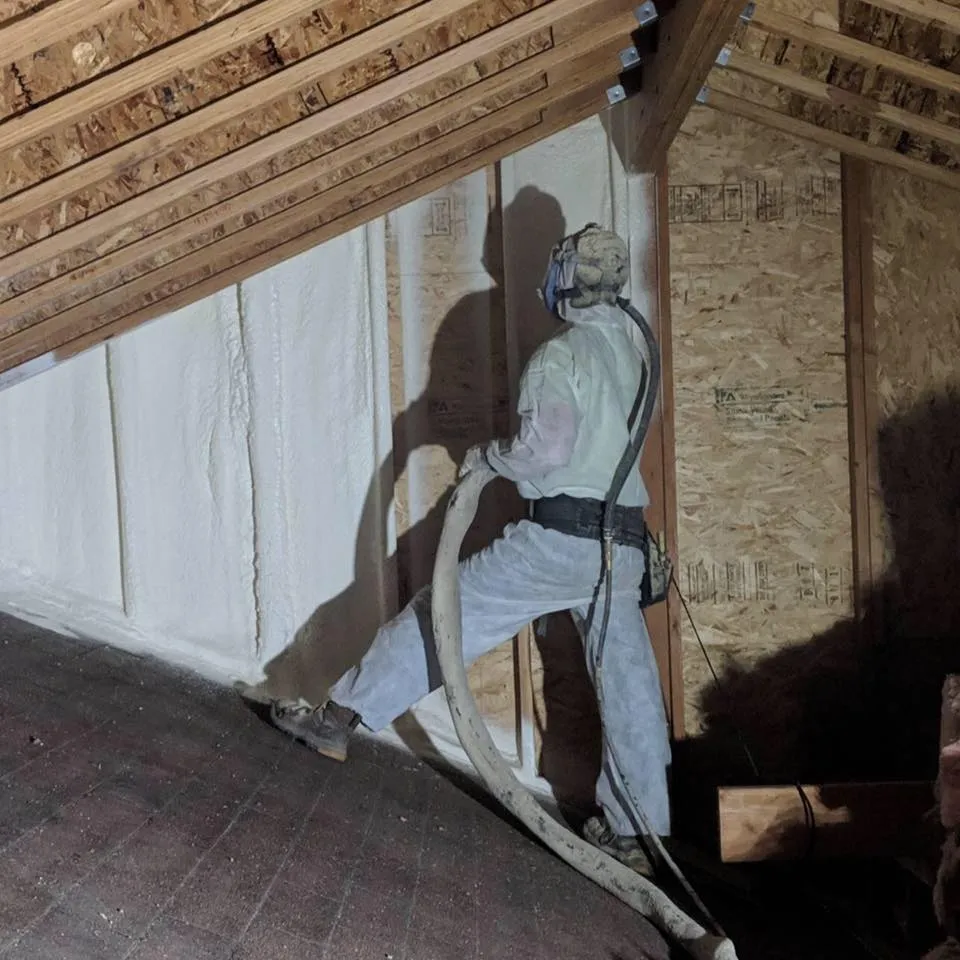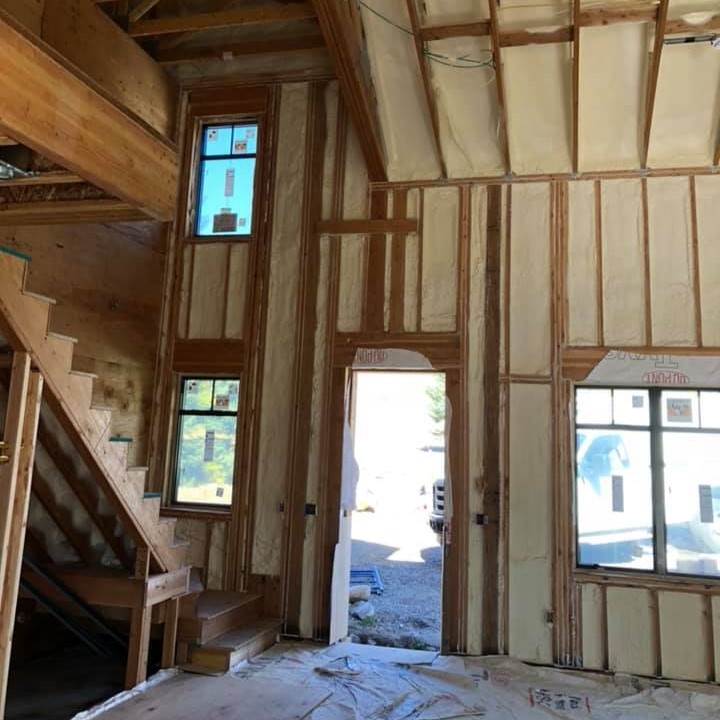
Spray foam insulation excels in Reno’s unique climate conditions due to its superior air sealing capabilities and thermal resistance that effectively handle the region’s extreme temperature swings. The high desert environment presents challenges, including temperature fluctuations exceeding 50°F between day and night, low humidity levels averaging 30%, and intense UV exposure that can compromise traditional insulation materials.
This comprehensive analysis examines the specific characteristics that make spray foam the optimal insulation choice for Reno’s demanding climate conditions. Nevada Urethane has observed consistent performance advantages across residential and commercial applications throughout the region’s diverse weather patterns.
Reno’s high desert climate creates unique insulation demands that conventional materials struggle to address effectively. The city experiences a semi-arid climate with hot, dry summers reaching temperatures above 90°F and cold winters dropping below freezing. These conditions demand insulation solutions that maintain consistent thermal performance regardless of seasonal variations.
The region’s low precipitation levels, averaging only 7 inches annually, combined with intense solar radiation and frequent wind patterns, create additional stress on building envelope systems. Traditional insulation materials often fail to provide adequate protection against these environmental factors.
| Insulation Type | R-Value per Inch | Air Sealing Capability | Temperature Range Performance | Moisture Resistance |
|---|---|---|---|---|
| Closed-Cell Spray Foam | 6.0-7.0 | Excellent | -40°F to 200°F | Superior |
| Open-Cell Spray Foam | 3.5-4.0 | Good | -20°F to 180°F | Moderate |
| Fiberglass Batts | 3.2-3.8 | Poor | -20°F to 180°F | Poor |
| Cellulose | 3.6-3.8 | Fair | -10°F to 160°F | Fair |
Spray foam maintains consistent insulating properties across Reno’s temperature extremes, unlike traditional materials that lose effectiveness when temperatures drop below 40°F. The closed-cell structure provides continuous thermal resistance that prevents heat transfer through convection and conduction.
Bonus Tip: Closed-cell spray foam increases in R-value as temperatures decrease, making it particularly effective during Reno’s cold winter nights when heating costs typically spike.
According to the North American Insulation Manufacturers Association, buildings with spray foam insulation reduce energy consumption by 30-50% compared to traditional insulation methods in desert climates. This performance advantage becomes especially pronounced during Reno’s extreme weather events.
| Performance Metric | Closed-Cell Spray Foam | Open-Cell Spray Foam | Reno Climate Requirement |
|---|---|---|---|
| Thermal Conductivity (k-factor) | 0.16-0.20 BTU·in/hr·ft²·°F | 0.24-0.28 BTU·in/hr·ft²·°F | < 0.25 BTU·in/hr·ft²·°F |
| Air Permeability | < 0.02 L/s·m² | 1.0-5.0 L/s·m² | < 0.1 L/s·m² |
| Water Absorption | < 2% by volume | 15-20% by volume | < 5% by volume |
| Operating Temperature Range | -100°F to 200°F | -20°F to 180°F | -10°F to 110°F |
Reno’s arid environment presents unique moisture challenges that spray foam addresses effectively. The material’s closed-cell structure prevents moisture infiltration while allowing controlled vapor transmission, preventing condensation issues common with other insulation types.
The low humidity levels averaging 30% annually can cause traditional insulation materials to become brittle and lose effectiveness. Spray foam maintains structural integrity and thermal performance regardless of humidity fluctuations.
Bonus Tip: In Reno’s dry climate, spray foam’s moisture barrier properties prevent indoor humidity from escaping, reducing heating and cooling system workload by up to 25%.
Reno experiences frequent wind patterns, particularly during the spring months when gusts exceed 40 mph regularly. The Department of Energy reports that air infiltration accounts for 25-40% of heating and cooling energy loss in desert climates. Spray foam creates a seamless barrier that eliminates air leakage points common with batt insulation installations.
The material’s adhesive properties create permanent bonds with building materials, preventing wind-driven air infiltration that compromises comfort and energy efficiency. This characteristic proves especially valuable in Reno’s exposed high desert locations.
Reno’s high elevation and clear skies result in intense UV exposure that degrades many building materials over time. Quality spray foam formulations include UV-stable additives that maintain performance characteristics for decades without significant deterioration.
The material’s chemical composition resists thermal cycling damage that affects other insulation types exposed to Reno’s daily temperature swings. This stability translates to consistent long-term performance and reduced maintenance requirements.
Several factors influence spray foam performance in Reno’s climate conditions. Building orientation affects thermal load distribution, with south-facing surfaces requiring enhanced insulation thickness to handle direct solar exposure. Existing building envelope conditions must be evaluated to ensure proper adhesion and performance.
Professional installation becomes critical in Reno’s temperature extremes, as ambient conditions during application affect curing rates and final performance characteristics. Timing installations during moderate weather periods ensures optimal results.
Ventilation requirements may change after spray foam installation due to improved air sealing. Mechanical ventilation systems often require adjustment to maintain proper indoor air quality in tightly sealed buildings.
Bonus Tip: Schedule spray foam installations during fall or spring months when temperatures remain between 60-80°F for optimal curing conditions and installer comfort.

Nevada Urethane provides targeted insulation solutions designed specifically for Reno’s challenging climate conditions:
Installation timing affects performance significantly in Reno’s climate. Spring and fall months provide optimal temperature and humidity conditions for proper curing. Avoid installation during extreme temperature periods or high wind conditions.
Reno’s 4,400-foot elevation requires application pressure adjustments and modified curing protocols. Professional installers adjust equipment settings to compensate for reduced atmospheric pressure and ensure proper foam expansion.
Closed-cell applications typically require 2-3 inches for walls and 3-4 inches for roofs in Reno’s climate. Open-cell installations need 6-8 inches for comparable thermal performance. Local building codes specify minimum requirements based on climate zone classifications.
Spray foam’s superior performance in Reno’s challenging climate conditions stems from its ability to simultaneously address thermal resistance, air sealing, and moisture management. The material’s consistency across temperature extremes provides year-round comfort and energy efficiency that traditional insulation cannot match.
Property owners evaluating insulation options should consider long-term performance, energy savings potential, and comfort improvements when making decisions. Spray foam’s higher initial investment typically provides payback through reduced energy costs and improved building durability.
Reno’s unique climate demands insulation solutions that perform consistently across extreme conditions. Professional assessment determines the optimal spray foam application for your specific building requirements and performance goals.
Nevada Urethane brings extensive experience with high desert climate challenges and proven installation techniques that ensure maximum performance. Contact our team at (775) 397-2820 or [email protected] to discuss your insulation needs and schedule a comprehensive property evaluation. Our expertise in Reno’s demanding weather conditions ensures your investment delivers lasting comfort and energy efficiency benefits.
Complete residential installations typically require 1-2 days, depending on home size and complexity. Weather conditions may extend timelines if temperatures fall outside optimal application ranges.
Proper surface preparation includes cleaning debris, sealing major air leaks, and ensuring adequate access for equipment. Moisture content must be below 19% for optimal adhesion to building materials.
Improved air sealing often allows HVAC downsizing by 20-30% due to reduced heating and cooling loads. Existing ductwork may require sealing improvements to match the building envelope’s enhanced performance.
Spray foam requires minimal maintenance once properly installed. Annual visual inspections identify any mechanical damage or settling issues that might compromise performance.
Reno building codes specify thermal barriers for certain applications and fire-rated assemblies for specific locations. Professional installers ensure compliance with all local requirements and permit processes.